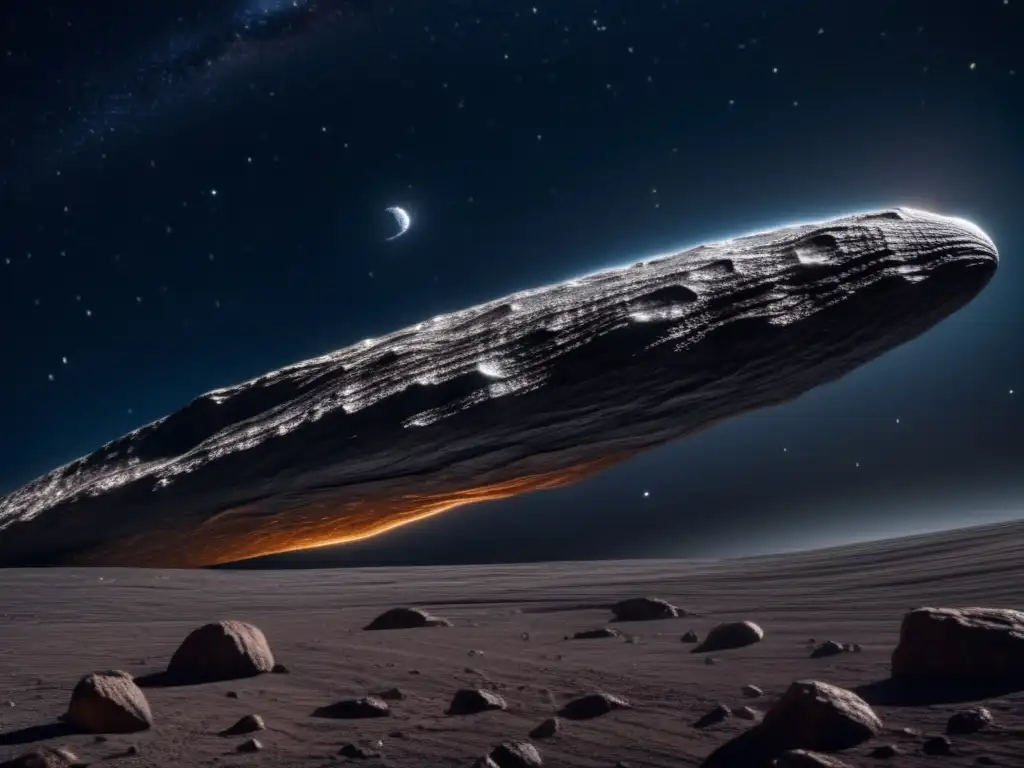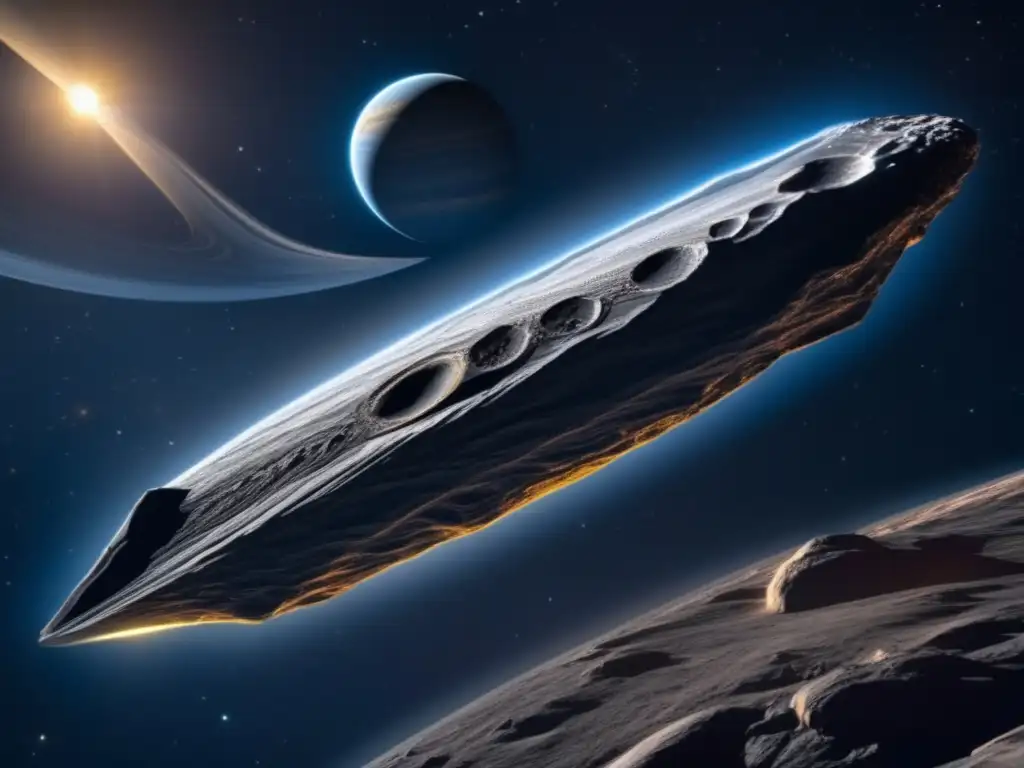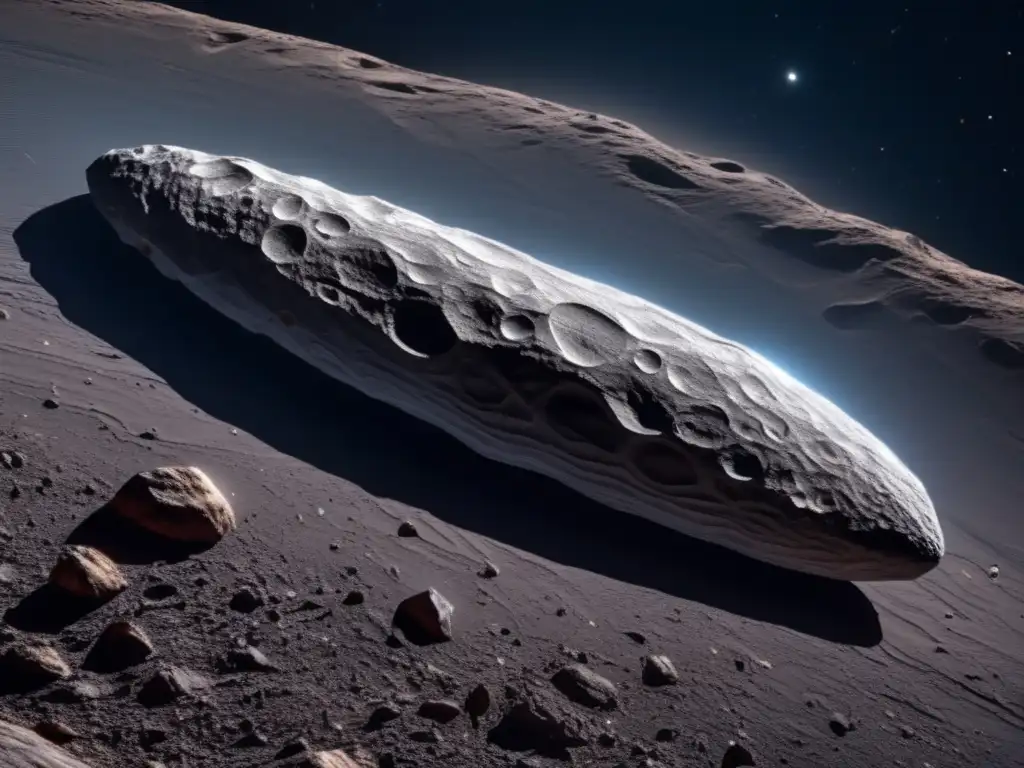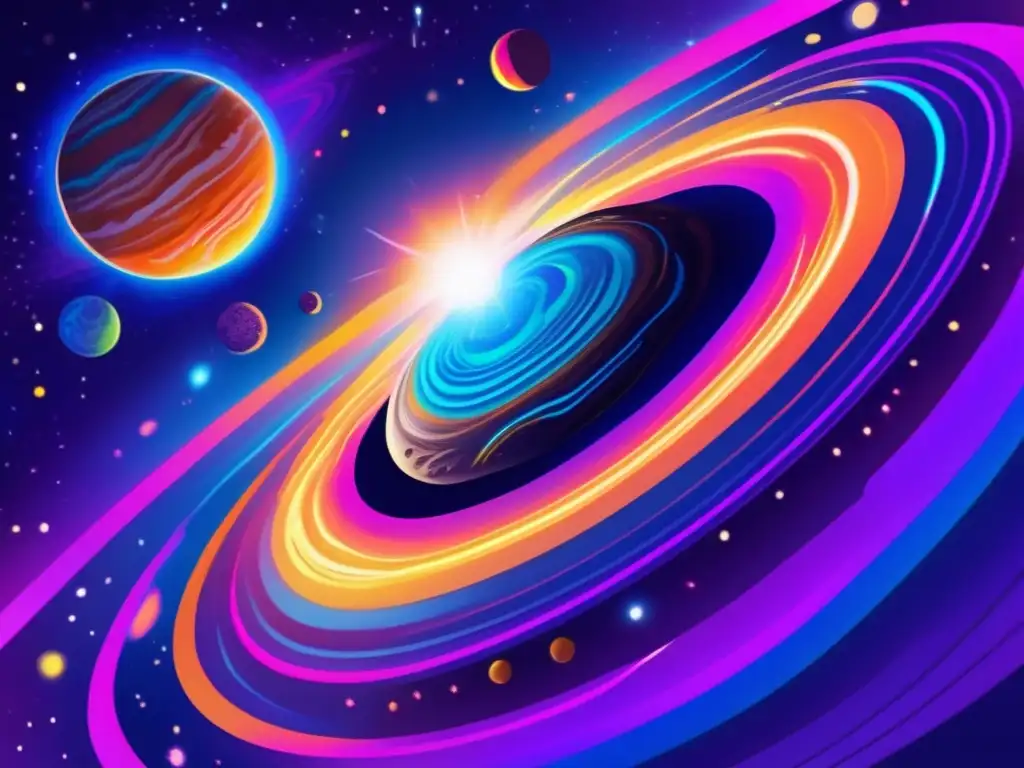A Detailed Look At Interstellar Visitor 'Oumuamua

Introduction
Asteroids have long fascinated astronomers and space enthusiasts alike, but every now and then, a truly remarkable object captures our attention. One such object is 'Oumuamua, the first known interstellar visitor to our solar system. In this article, we will delve into the intriguing details of this enigmatic asteroid and explore its significance in the realm of space exploration.
Discovery and Characteristics

Origin and Journey
'Oumuamua was first discovered on October 19, 2017, by the Pan-STARRS1 telescope in Hawaii. Its name, derived from Hawaiian, means "scout" or "messenger from afar." It has an elongated shape, stretching nearly 800 meters long and only about 80 meters wide, which is quite unusual for an asteroid. Its unusual shape and high speed suggested that it originated from beyond our solar system, making it the first confirmed interstellar object to visit Earth.
Composition and Spectral Analysis
Scientists have made several attempts to analyze 'Oumuamua's composition using spectroscopy. The results indicate that it is likely made of metal-rich rock, similar to many asteroids in our solar system. However, its reddish color suggests a distinct, unknown surface composition. The lack of a coma or tail, typically associated with comets, further supports the theory that 'Oumuamua is an asteroid rather than a comet.
Unusual Trajectory and Acceleration
'Oumuamua's trajectory through our solar system revealed a peculiar acceleration that could not be accounted for by the gravitational forces of the Sun and planets alone. This unexpected acceleration, known as non-gravitational acceleration, led to speculation that 'Oumuamua might be an artificial object, such as a light sail propelled by solar radiation pressure. However, further observations and analysis favored natural explanations, including outgassing or the Yarkovsky effect.
Implications and Scientific Significance

Interstellar Archaeology
'Oumuamua presents a unique opportunity for scientists to study the composition and characteristics of objects from other star systems. By analyzing its properties, we can gain insights into the diversity and formation processes of asteroids in different stellar environments. 'Oumuamua serves as a reminder of the vast cosmic neighborhood beyond our solar system and the potential for future discoveries.
Origins of Life
Studying interstellar objects like 'Oumuamua can also shed light on the potential for the exchange of life's building blocks between star systems. It is possible that asteroids like 'Oumuamua could transport organic compounds or even microbial life across vast distances, seeding young planetary systems with the ingredients necessary for life to emerge. Further research and analysis of interstellar visitors will help us better understand the origins and prevalence of life in the universe.
Technological Implications
The presence of 'Oumuamua has sparked discussions about the need for improved monitoring systems to detect and characterize interstellar visitors. The development of advanced telescopes and space missions dedicated to tracking and studying these objects could provide valuable insights into the nature of interstellar objects and their potential impact on our solar system.
Potential Interstellar Visitors

The Hunt for More 'Oumuamuas
Given the discovery of 'Oumuamua and its uniqueness, astronomers are now actively searching for more interstellar objects passing through our solar system. New telescopes and sky surveys are being designed to improve our ability to detect and characterize these visitors. By studying a larger sample of interstellar objects, scientists hope to gain a more comprehensive understanding of their properties and origins.
Future Missions and Exploration
In light of 'Oumuamua's brief visit, there is growing interest in launching dedicated space missions to study interstellar objects up close. Advanced spacecraft equipped with instruments capable of analyzing their composition, structure, and dynamics could provide invaluable data to unravel the mysteries surrounding these celestial travelers. Such missions would open up new frontiers in space exploration and deepen our understanding of the universe.
Frequently Asked Questions

-
Q: What makes 'Oumuamua different from other asteroids?
A: 'Oumuamua is distinct because it is the first confirmed interstellar object to visit our solar system, originating from outside our own star system.
-
Q: Could 'Oumuamua be an alien spacecraft?
A: While 'Oumuamua's unusual shape and acceleration initially sparked speculation about extraterrestrial technology, subsequent studies suggest natural explanations for its properties.
-
Q: How does 'Oumuamua's discovery impact our understanding of the universe?
A: 'Oumuamua provides new insights into the prevalence and nature of interstellar objects, expanding our knowledge of the cosmic neighborhood beyond our solar system.
-
Q: Are there more interstellar objects like 'Oumuamua?
A: Astronomers are actively searching for additional interstellar objects and hope to discover more in the coming years, thanks to improved observatories and detection methods.
-
Q: Could interstellar objects carry life?
A: While it is theoretically possible for interstellar objects to transport organic compounds or even microbial life, further research is needed to determine the likelihood and mechanisms of such transfers.
Conclusion
'Oumuamua's visit has undoubtedly sparked excitement and curiosity within the scientific community and the general public. This interstellar visitor serves as a reminder of the vastness of our universe and the potential for remarkable discoveries that lie beyond the confines of our solar system. By continuing to explore and study asteroids and interstellar objects, we deepen our understanding of the cosmos and our place within it. Share your thoughts and join the conversation on www.asteroidrealm.com, where we delve deeper into the wonders of the universe.
Additional Resources

For further information on asteroids and interstellar objects, check out the following resources:
- NASA's Asteroid Exploration Website
- European Space Agency (ESA) Asteroid Videos
- International Astronomical Union (IAU) - Interplanetary Objects
 Borisov: Our Second Known Interstellar Visitor
Borisov: Our Second Known Interstellar Visitor The Role Of 3200 Phaethon In The Geminids Meteor Shower
The Role Of 3200 Phaethon In The Geminids Meteor Shower Alinda Asteroids: An Orbital Resonance With Our Planet
Alinda Asteroids: An Orbital Resonance With Our PlanetIf you want to discover more articles similar to A Detailed Look At Interstellar Visitor 'Oumuamua, you can visit the Asteroid Profiles category.
Leave a Reply

Articulos relacionados: